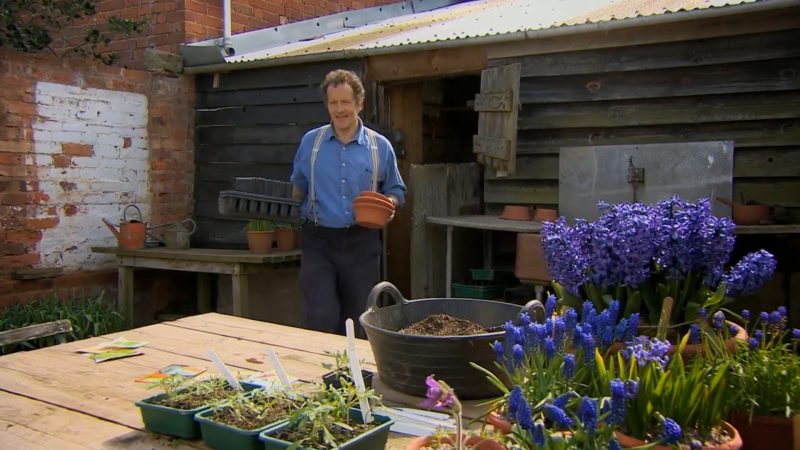Gardeners World episode 18 2016 – As summer gets into full swing, there is plenty for Monty to be doing at Longmeadow, and this week he gets to grips with summer pruning as he tackles his espaliered pear trees.
Nature’s bounty is very much in evidence at Lord Rothschild’s garden at Waddesdon Manor, where we get an exclusive look behind the scenes, and Joe Swift ponders ways of putting a contemporary twist on traditional bedding plants.
In Gardeners World episode 18 2016:
Yellow rattle
This pretty little annual sends out roots that grow into the roots of neighbouring grass plants, and steal nutrients (that is, food) from them. It will produce many tiny seeds that rattle around in the papery brown calyx – hence the common name – and it can spread itself year by year, weakening the poor, hard-working grasses that it grows among.
Wild flower area maintenance
Wildflower meadows require an annual maintenance programme to allow the more desirable species to flourish and to reduce the vigour of the more rampant species. This usually involves mowing and some judicious weed control.
Pruning espalier fruit trees
Training apples and pears as espaliers is a space-saving way of growing fruit on a wall or fence. They require little pruning once established and are attractive in blossom and fruit and architectural during winter. Ornamentals such as Pyracantha are sometimes trained as espaliers.
Begonias
Used in containers, hanging baskets and bedding schemes, begonias provide continuous colour throughout the summer until the first frosts. They are easy to care for and all grow well in partial shade.
Box blight
Box blight is a fungal disease of box resulting in bare patches and die-back of box, especially in topiary and parterres.
Morello cherries
Acid cherries tolerate some shade, so are a good choice for a north-facing site or wall. They are self-fertile and do not need another tree to act as a pollinator. The fruits are too acid to eat raw, but are excellent when cooked and make very good jam.




